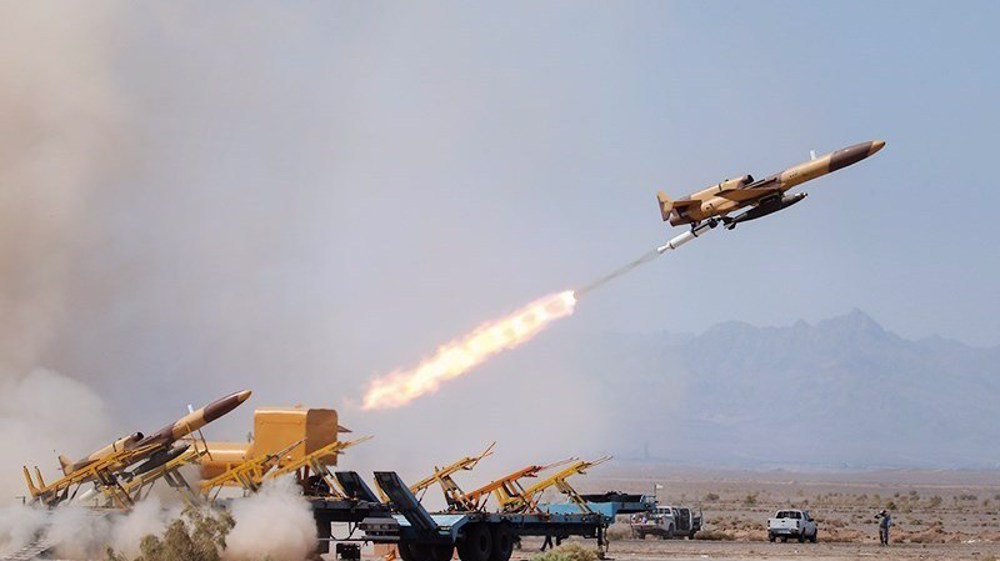Iranian Armed Forces have successfully drilled operations against electronic and cyber attacks on air defense systems on the second day of specialized joint air defense exercises.
They “practiced different methods and tactics of electronic warfare and cyber warfare in order to deal with an electronic invasion”, said Brig. Gen. Abbas Farajpour, the spokesman for the Guardians of Velayat Sky 1402 drills, on Friday.
The exercises are held in an area spanning 583 km, which stretches from the southern coast strip to 400 km deep inside the country and up to air surveillance areas.
Farajpour said one of the important features of the drills is a coordinated and powerful use of indigenous electronic warfare systems.
“In this stage of the exercise, the stability, survivability and continuity of the operation of radars as one of the main components of air defense in an environment contaminated with electronic warfare was evaluated,” he said.
Surveillance satellites, unmanned aircraft and information detection and collection systems and air defense radars of the country were used to detect and identify targets and monitor the exercise area under the electronic warfare environment.
“The electronic jamming on the attacking drones and taking control of the aircraft in order to prevent infiltration into the exercise area were among other exercises which were carried out successfully in this phase,” Farajpour said.
On the second day of the exercise, various low-altitude targets were also shot down by short-range 9-Dey missile defense system of the IRGC Aerospace Force.
“The use of various air defense equipment in the Army and the IRGC Air Force under the direction of the Khatam al-Anbiya Air Defense Joint Base in this exercise shows the strength and capability of the Islamic Republic of Iran in the field of air defense, which has been able to defeat the arrogant powers with decisiveness and ability at different times over the past years,” Gen. Farajpour said.
On Thursday, Iranian forces successfully launched a new air defense method that uses drones to intercept and target hostile targets.
Upgraded domestically-developed Karrar combat drones, armed with homegrown air-to-air missiles, successfully intercepted and destroyed hostile aircraft during the drills.
The jet-powered unmanned aerial vehicles launched Majid air-to-air missiles, with a range of eight kilometers (4.9 miles), at the simulated enemy’s aircraft, destroying some and forcing the rest to leave the exercise area, said Gen. Farajpour.
He noted that Iran had successfully developed a new concept of unmanned aerial defense, in addition to the conventional ground-based and manned methods.
The method was employed for the first time during a large-scale drone drill, which the Islamic Republic of Iran Army staged over the strategic waters of the Persian Gulf and the Sea of Oman, all four corners of the country and its central part back in early October last year, he added.
Listing the benefits of the concept as increasing the defense depth, enhancing the tactical air defense capacities, changing the conflict zone from ground to air, protecting the wartime economy, improving the mobility of air defense units, and reducing the potential risks to servicemen, he noted that the new method, known as “Rasoul Plan” has been formulated by experts at Army’s Air Defense and Defense Ministry.
Farajpour described as “very complex” the interception and engagement of hostile aircraft by means of drones.
“One of the positive features of such an achievement is that we can engage enemy helicopters, drones and fighter jets at any altitude,” Farajour pointed out.
The drill began with the participation of the Air Defense Force of the Army, the Aerospace Force of the Islamic Revolution Guards Corps (IRGC), the Air Force of the Islamic Republic of Iran, the Navy of the Islamic Republic of Iran, the Navy of the IRGC, and parts of the Army’s ground forces under the operational control of the Khatam al-Anbia Joint Air Defense Base.
The aim of the exercise, Farajpour said on Thursday, is to “show the strength, high morale, faith and martyrdom-seeking of the armed forces, so that the noble nation of Iran can see this authority and strength and be more proud of it.”
“The formation of safe layers of air defense to protect the air borders of the Islamic Republic of Iran as well as the all-round defense of the sensitive and vital centers of the country is one of the goals of this exercise,” he said.
Iran’s Armed Forces regularly hold military maneuvers to elevate their preparedness and military prowess. The drills also serve as a warning message to the enemies against any act of aggression against the Islamic Republic.




